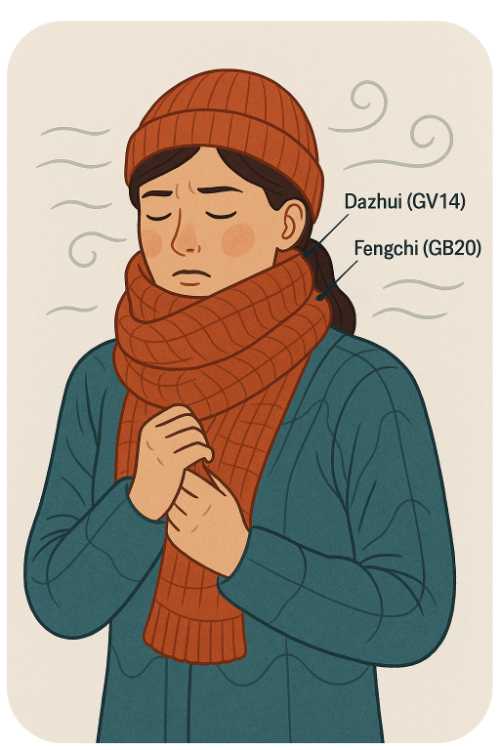Hypertension and Metabolic Disorders:
A TCM View of a Modern Epidemic
High blood pressure (hypertension) is one of the most prevalent health conditions facing Americans. In fact, 68 million Americans (1 in every 3 U.S. adults) have high blood pressure, and nearly 20 percent more do not know they have it. Sadly, the disease can lead to other health problems, including heart attack, stroke, and heart failure.
In recent years, researchers have begun to see hypertension not as an isolated condition but as part of a wider metabolic pattern involving obesity, insulin resistance, and abnormal blood lipids. Together, these imbalances form what Western medicine calls metabolic syndrome—a state that often precedes cardiovascular disease. Traditional Chinese Medicine (TCM), with its emphasis on balance and systemic harmony, offers valuable insight into why these disorders so often appear together.
 Large studies have confirmed the strong connection. Data from the Framingham Heart Study and later analyses in The Lancet and Nature Reviews Endocrinology show that visceral (abdominal) obesity increases blood pressure through activation of the sympathetic nervous system and the renin–angiotensin–aldosterone system (RAAS). Insulin resistance, common in both obesity and early diabetes, further raises blood pressure by promoting sodium retention in the kidneys and reducing the elasticity of blood vessels. Dyslipidemia which is high triglycerides and low HDL cholesterol adds another layer of risk by impairing vascular function and promoting chronic low-grade inflammation.
Large studies have confirmed the strong connection. Data from the Framingham Heart Study and later analyses in The Lancet and Nature Reviews Endocrinology show that visceral (abdominal) obesity increases blood pressure through activation of the sympathetic nervous system and the renin–angiotensin–aldosterone system (RAAS). Insulin resistance, common in both obesity and early diabetes, further raises blood pressure by promoting sodium retention in the kidneys and reducing the elasticity of blood vessels. Dyslipidemia which is high triglycerides and low HDL cholesterol adds another layer of risk by impairing vascular function and promoting chronic low-grade inflammation.
This web of connections is well understood biochemically, but it also closely parallels TCM concepts that emerged centuries ago. In Traditional Chinese Medicine, obesity and sluggish metabolism are described as phlegm-damp (痰湿 tánshī) accumulation. This “dampness” obstructs the free flow of qi (气) and blood, while heat generated from stagnation transforms it into damp-heat (湿热 shīrè). When the liver’s function of dispersing qi becomes constrained, often due to stress or poor diet, it can lead to liver yang rising (肝阳上亢 gānyáng shàngkàng), a classic pattern seen in hypertension. Over time, qi stagnation and blood stasis weaken the Kidneys’ ability to regulate fluid and essence, deepening the cycle of imbalance.
From a TCM standpoint, therefore, hypertension linked to metabolic dysfunction reflects a multi-organ disturbance: the Liver’s failure to regulate movement, the Spleen’s failure to transform and transport nutrients, and the Kidneys’ failure to anchor yang and control water metabolism. This mirrors the modern understanding that hypertension, obesity, and insulin resistance share overlapping hormonal and neural pathways.
Treatment principles from both traditions align in surprising ways. Western medicine emphasizes reducing visceral fat, improving insulin sensitivity, and correcting lipid levels, usually through diet, exercise, and medication. TCM prescribes similar goals using different language: transform phlegm, drain dampness, clear heat, and tonify the Spleen and Kidneys. Classic herbal formulas such as Banxia Baizhu Tianma Tang (半夏白术天麻汤) for phlegm-damp with dizziness, or Tianma Gouteng Yin (天麻钩藤饮) for liver yang rising, are often used alongside lifestyle adjustments.
Modern studies increasingly support these approaches. Reviews published in Frontiers in Pharmacology (2024) and Complementary Therapies in Medicine have shown that herbal treatments targeting phlegm-damp and qi stagnation can modestly lower blood pressure, improve lipid profiles, and enhance endothelial function. Similarly, Qigong (气功) and Taijiquan (太极拳) mind/body exercises have been found to reduce systolic pressure and improve metabolic markers by promoting parasympathetic activity and mindful breathing.
The integration of both systems offers a broader path forward. For patients with metabolic hypertension, combining standard medical therapy with TCM-guided diet, movement, and individualized herbal formulas can address both the biochemical and energetic roots of disease. Instead of viewing high blood pressure as a single number to be lowered, TCM encourages a shift toward restoring the body’s overall rhythm—its qi, blood, fluids, and spirit.
In today’s world of processed foods, chronic stress, and sedentary habits, hypertension may be the visible tip of a much deeper imbalance. By understanding its metabolic connections, and by re-balancing body and mind through both modern science and traditional wisdom, we can approach prevention and healing with a more complete and humane perspective.
Vocabulary Guide
- Qi (气 qì) – Vital energy that flows through the body; essential for circulation, warmth, and function.
- Tánshī (痰湿) phlegm-damp accumulation
- Shīrè (湿热)damp-heat pattern
- Gānyáng shàngkàng (肝阳上亢) liver yang rising (overactive liver yang)
- Qìzhì qi (气滞) stagnation
- Xuèyū (血瘀) blood stasis
- Píxū (脾虚) spleen deficiency
- Shènxū (肾虚)kidney deficiency
- Tàijíquán (太极拳) (Tai Chi Chuan)
- Qìgōng (气功) breath and energy cultivation exercise



